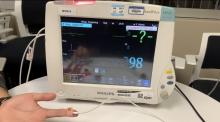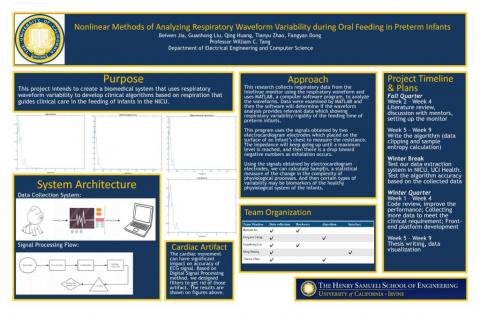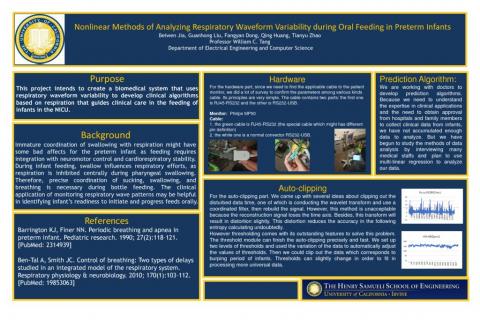Nonlinear Methods of Analyzing Respiratory Waveform Variability during Oral Feeding in Preterm Infants
Coordination of swallowing with respiration might have some bad effects for the preterm infant as feeding requires integration with neuromotor control and cardiorespiratory stability. The pharynx is the shared anatomic pathway for both swallowing and breathing. During infant feeding, swallow influences respiratory efforts, as respiration is inhibited centrally during pharyngeal swallowing. Therefore, the precise coordination of sucking, swallowing, and breathing is necessary during bottle feeding. However, in a coordinated nutritive sucking cycle, breathing is interposed between swallows in a sequential pattern (Bu’Lock et al., 1990), and respiration can be interrupted at any point in the cycle of inspiration or expiration by the swallow (Vice and Gewolb, 2008). The clinical application of monitoring respiratory wave patterns may be helpful in identifying the infant’s readiness to initiate and progress feeds orally. This measure of variability may also be used as a screening tool clinically to identify coordination patterns in infants with oral feeding challenges. Therapeutic interventions based on an infant’s respiratory pattern may assist infants in transitioning from gavage to full volume oral feeding.
Components of sucking, swallowing and breathing and the coordination between these motor activities require consideration by care providers during oral feeding of preterm infants. The achievement of safe and efficient oral feeding in preterm infants may be challenging as neurodevelopmental immaturities may contribute to difficulties in achieving cardiorespiratory stability and feeding progress. Analysis of respiratory waveforms during feeding may help quantify the complexity of coordinating swallowing and breathing and thereby provide a model of respiratory development as infants’ progress with oral feeding.
The purpose of our project is first to use an algorithm to filter out the special breathing waveforms caused by the nurses who beat the baby. Then our project would like to create a biomedical system that uses respiratory waveform variability to develop clinical algorithms based on respiration that guides clinical care in the feeding of infants in the NICU.



